Shrubs with autumn berries bring colour both from the berries themselves, and the birds they attract. The other good news is that they are easy to grow
H1 - H7 indicates the
RHS hardiness ratings (510kB pdf)
A shrub that captures our attention for the unusual violet colour of its berries, which is perhaps why birds only turn their attention to it late in the season. ‘Profusion’ also has lilac flowers in late summer and bronzed spring foliage - which colours again in autumn. Easy in sun or partial shade. 2m (6ft6in) H5.
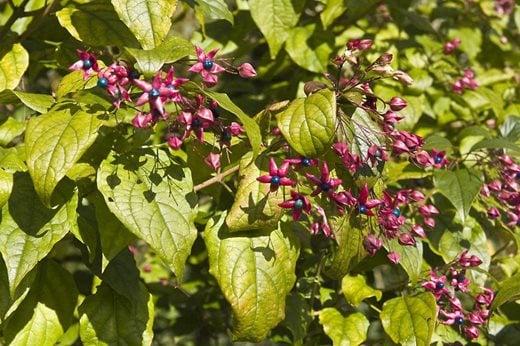
One of the most startling of autumn fruiting shrubs, and unique in its colouring, the pea-sized bright blue berries are backed by pinkish magenta lobes. Bears highly scented white flowers in summer. Happy in most soils in a little shade, or in sun with adequate moisture. 2.5m (8ft) H4.
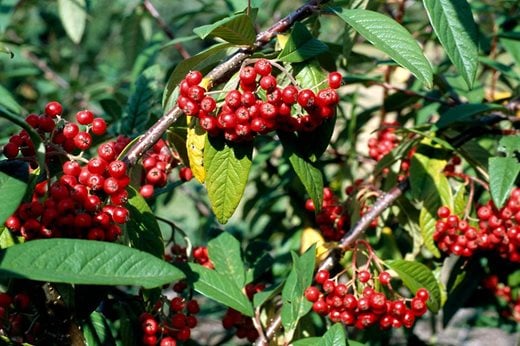
Many cotoneasters carry a generous crop of red berries but few are as dependable and as tough as this one. It’s quite a large cultivar, with fruits which are carried in such huge clusters that they weigh down the branches. Partially evergreen, so the foliage to makes an attractive background to the fruits without hiding them. 3m (10ft) H6.
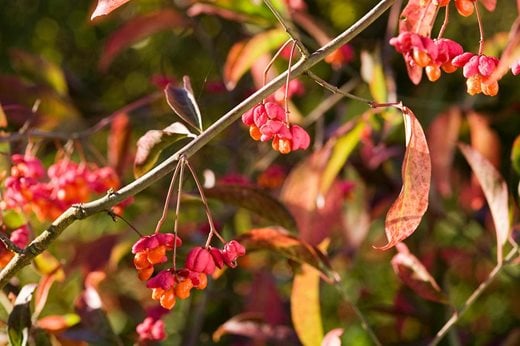
This colourful selection of our native spindle has two special features. Firstly, its autumn leaf colour is spectacular, a vivid scarlet. Also, it produces far more fruits than on the original wild type. Each fruit features a rosy red capsule which opens to reveal bright orange seeds. Happy on most soils, including chalk. 2.5m (8ft) H5.
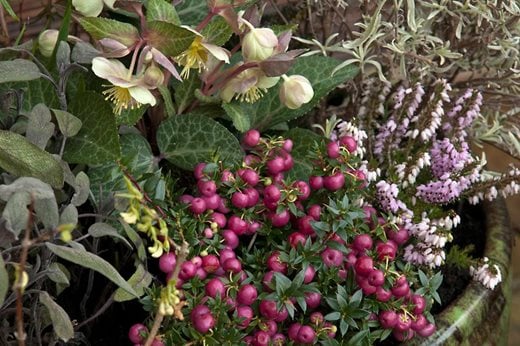
Long known as Pernettya, these acid-loving evergreens feature berries in a wide range of colours. ‘Bell’s Seedling’ not only has large dark red berries set against glossy dark green leaves - it’s also self fertile, unlike most other cultivars, so it does not need a separate male plant for pollination. The berries last right through the winter. 90cm (3ft) H6.
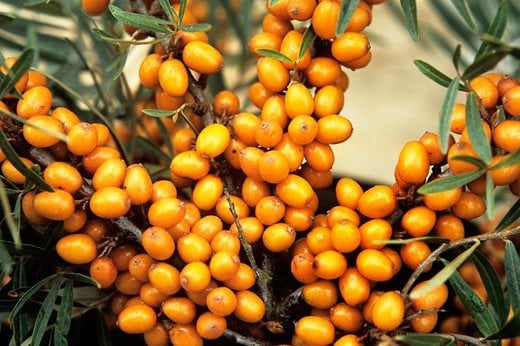
The sea buckthorn is a colourful British native shrub with deciduous silver leaves and orange berries through the winter. It’s very adaptable and tolerant of poor soil, exposure and sea spray. ‘Leikora’ bears generous crops of tasty berries which are packed with vitamins A, C and E. It prefers plenty of sun and needs a male plant for pollination. 3m (10ft) H7.
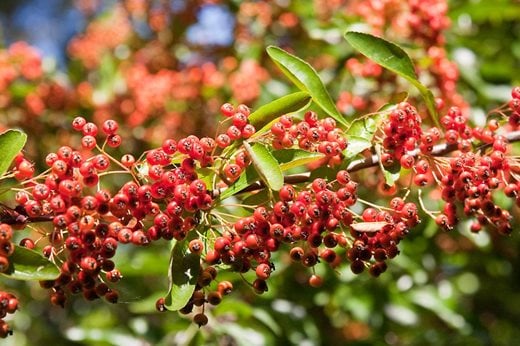
Pyracanthas can suffer from scab and canker so it’s important to choose resistant cultivars. Not only is Saphyr Rouge resistant to both diseases, but it’s more upright in growth and shorter than many and so fits well into smaller gardens. Pyracantha is also a favourite nesting shrub for birds. 2m (6ft6in) H6.
_RHS_WSY0032335_940x627_1.jpg?width=520&height=346)
So many roses feature colourful autumn and winter hips that making a choice is difficult. ‘Geranium’ has the rich, bright red flowers followed by larger than usual crimson hips, and is a little shorter than others of this type, fiting better into many gardens. Ideal at the back of a mixed border. 2.5m (8ft) H7.
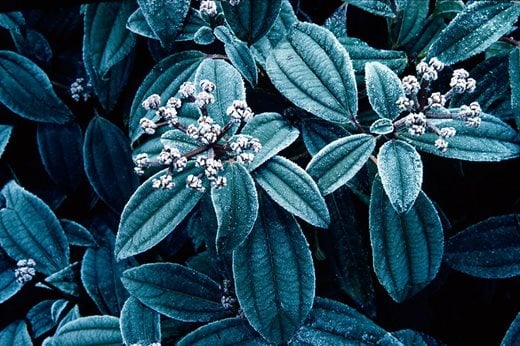
This is one of the best evergreen viburnums. Its low spreading habit makes ideal groundcover, and its large, dark green leaves are a good background for the clusters of small white flowers. But the glory comes with the gorgeous turquoise autumn berries; cross-pollination provides the most fruits, so always plant at least three. Happiest in sun, but not too dry. 80cm (2ft6in) H5.
This deciduous viburnum is a spectacular form of our native guelder rose. In summer, the white lacecap flowers are set against maple-like foliage, followed in autumn by clusters of golden yellow, almost translucent berries that last well into the winter before finally feeding the birds. Grows well in damp soils in sun or a little shade. 2.5m (8ft) H6.
H1 - H7 indicates the RHS hardiness ratings (510kB pdf)

